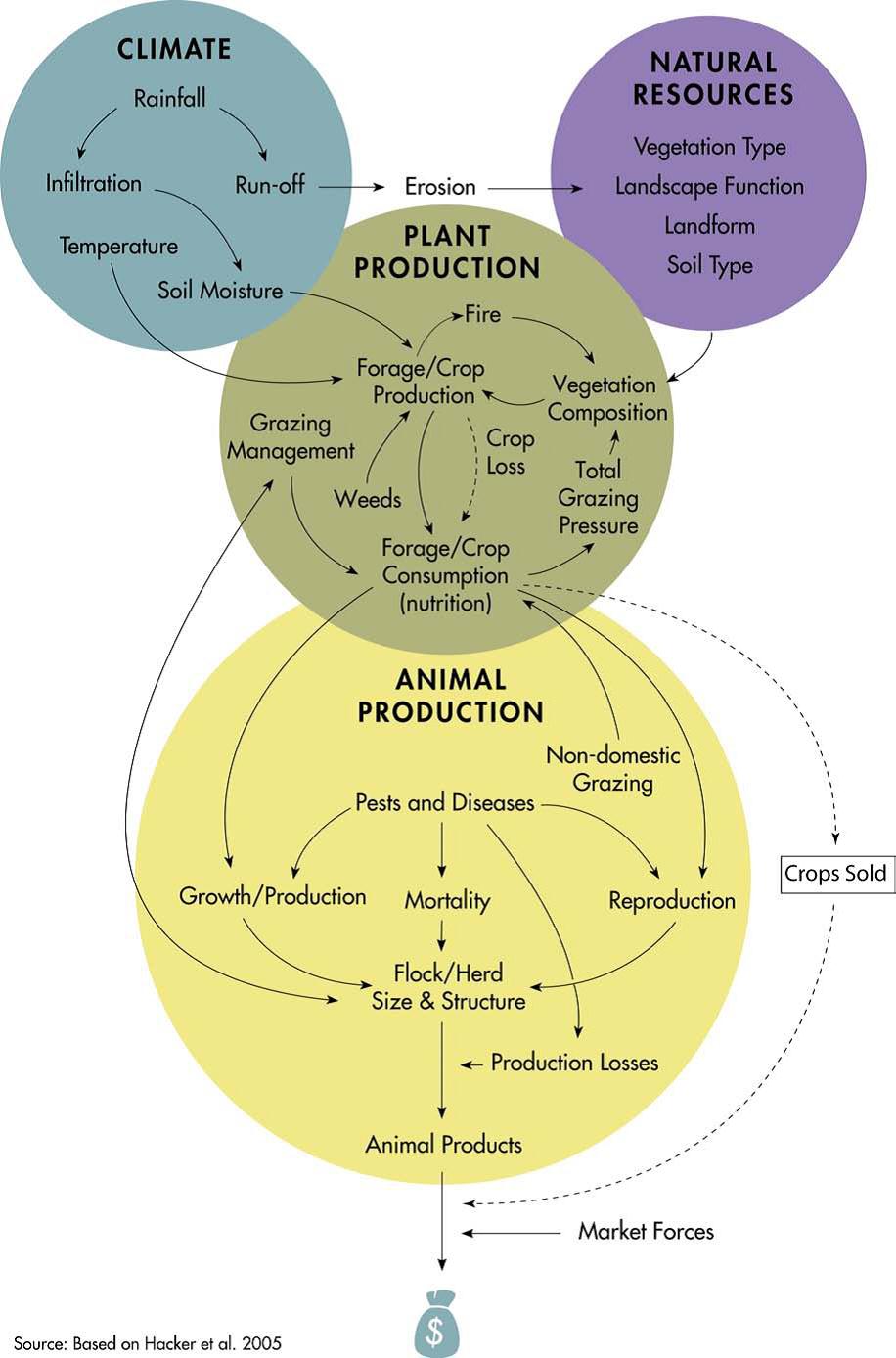3 - Managing your natural resources

Calculating the number of stock for each paddock
Key actions
- Map property and paddocks into land types.
- Describe land types based on soil type and dominant vegetation.
- Determine use and relevance of photo standards and photo points for monitoring land condition.
Why is it important to understand the natural resource base on your property?
Natural resources are your natural assets and the foundation of your production system. They include:
- soil
- vegetation
- water (surface and underground)
- biodiversity
How does this module assist you?
Every property has a unique combination plant species, soils, topography and climate; which together make up land type and land capability.
This module will help you to understand and manage vegetation, water, soil and landscape health to achieve sustainable production from the grazed area of your property.
To achieve sustainable production you need to:
- define the capacity and limits of natural resources that are used by mapping and describing water sources and pasture zones based on land type
- monitor trends in vegetation and land condition to enable long term sustainable use (using photo points and photo standards)
Linkages to other modules
This module describes your property natural resources and condition status for use in Module 1: Setting directions.
Vegetation condition links directly to Module 3: Managing your feedbase and indirectly to Module 5: Maximising weaner throughput and Module 7: Meeting market specifications. It is also linked to Module 6: Herd health and welfare through nutritional problems that can arise from particular native vegetation and weed species and/or seasonal growth conditions.
Principles of natural resource management
The natural resources on your property are made up of soil, vegetation, water resources and biodiversity, and these are all interlinked (see Figure 1). Together the natural resources allow you to produce beef and if just one of these resources is in poor condition or supply, production can be severely limited.
The pasture component of vegetation is what cattle (stock) eat and thrive on: the plants grow in the soil and water is vital for both drinking water and for plant growth. A diverse mix of vegetation and associated native fauna (biodiversity) is necessary to keep the whole system operating, including soil microbes, insects which pollinate plants and birds that eat and control pests.

Figure 1: Interactions between climate, natural resources, plant production/growth and animal production.
